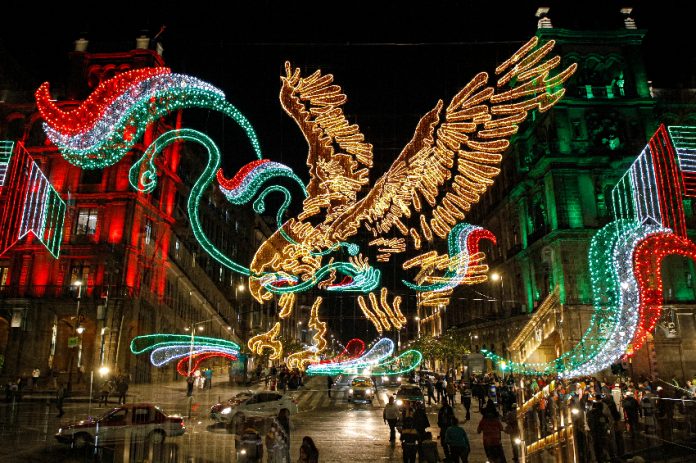In Mexico, September is the month of las fiestas patrias (patriotic festivities) — a time for flags, fireworks and, of course, singing the himno nacional, or national anthem. But Mexicans today don’t sing the song as it was originally written.
In 1853, president Antonio López de Santa Anna hosted a contest to create this symbol of national pride, calling for submissions from poets and musicians. Out of 26 participants who submitted lyrics, a poem was chosen by Francisco González Bocanegra, originally from San Luis Potosí.
The poem, a colorful ode to the country’s military glory and national fortitude, was supposedly written by González under duress. Legend has it that his fiancée had such extraordinary faith in his talents that she locked him in a room filled with images from Mexican history and refused to let him out until he finished the lyrics.
After González’s lyrics were chosen, it was time to put them to music, and among the entries was a composition by Jaime Nunó, a Spaniard who had met Santa Anna on a trip to Cuba and had just arrived in Mexico to work as a band director.
Nunó’s music was chosen to accompany Bocanegra’s lines, but even though his work was the official choice, many Mexicans didn’t like the fact that Nunó was a foreigner and felt that both the lyrics and the music of the national anthem should be written by Mexicans.
In the end, Nunó’s music was selected despite local grumbling, and the anthem was first heard on September 15, 1854, at the Santa Anna Theater in Mexico City (what would later become the National Theater). That first playing of the anthem was under the direction of orchestra leader and double bass virtuoso Giovanni Bottesini, an Italian who had also participated in the national contest.
Because President Santa Anna wasn’t present for this first performance, it wasn’t considered the anthem’s official debut, instead, it was “debuted” the following day, with musicians directed by Nunó himself.
Santa Anna, then anthem’s sponsor, would eventually be vilified by many Mexicans as the leader responsible for losing over half of Mexico’s national territory to the United States. By 1943, during the presidency of Manuel Ávila Camacho, a new official version of the anthem was published that excluded several stanzas referring to Santa Anna.
The verses about Agustín de Iturbide, an Independence-era general and the country’s first emperor, were also removed. According to Mexican law, a singer can be fined a whopping 900,000 pesos for singing the banned stanzas of the anthem or modifying the lyrics.
With reports from La Silla Rota, Excelsior, Velas Resorts Magazine, and Milenio
